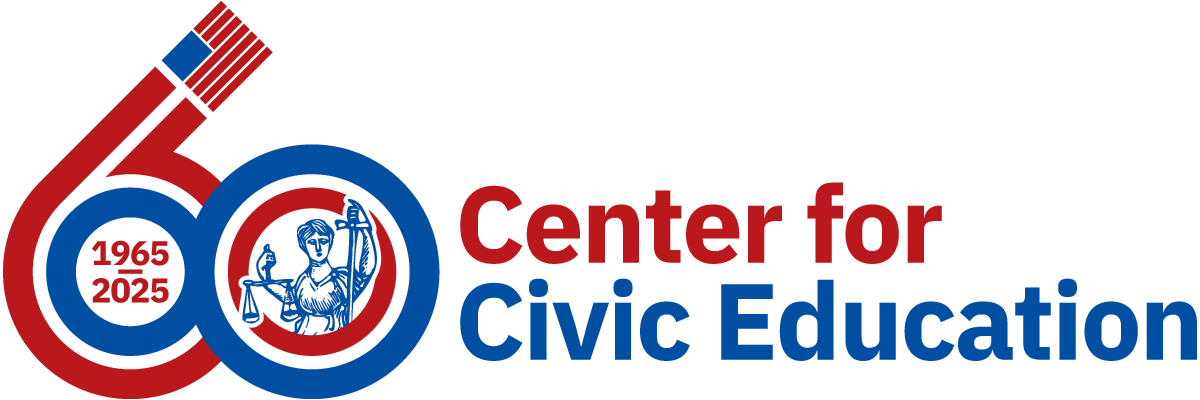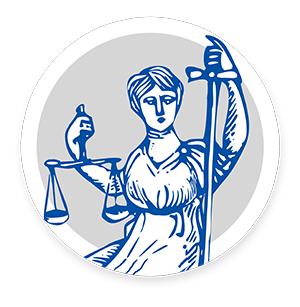| LESSON PLAN - Day 3 |
| ENGAGE: ACTIVATE PRIOR KNOWLEDGE |
DIFFERENTIATION |
- Greet students upon entry to the classroom and welcome them to Social Studies.
- Lead a brief discussion to review the elements that were present in the Civil Rights protest songs from the previous day’s lesson. Examples might include:
- call to unite people
- uplifting lyrics or melody
- messages about the movement
- list of desired changes or outcomes
- Provide students access to the lyrics BLACK EYED PEAS - WHERE IS THE LOVE? LYRICS and play the song
The Black Eyed Peas - Where Is The Love? (Official Music Video).
- As students explore the song, ask them to listen for words and phrases that illustrate the song’s message.
- Ask students to list words/phrases that could relate to a protest movement. Themes present in the song include:
- Racism
- War
- Pollution
- Unity
- Love
- Ask students to make a prediction about the type of movement this song represents.
- After discussing possible predictions, reveal to students that the songwriters were inspired by the tragic events of 9/11 in 2001 and the U.S. invasion of Iraq in 2003. Additionally, the songwriters reference racial injustice in the U.S. and the need for unity and religious tolerance in post-9/11 America.
|
UDL
- Consider playing audio only on the first occasion, then share lyrics with students for the second round.
- Teacher should model how to annotate the song lyrics, as needed. Consider a color coding system (Ex: Positive messages in green and negative messages in red).
- Display the list of topics for students to annotate.
- Provide historical context for the events of 9/11, as needed.
ELL
- Explore subtitle options to change language when viewing video through YouTube.
- Spanish translations have been provided for the song lyrics.
- Provide lesson vocabulary translated in native language of student(s).
|
| EXPLORE: GUIDED/OPEN INQUIRY |
DIFFERENTIATION |
- Display today’s supporting question, “How does music continue to influence protest movements?”
- Ask students to provide examples of how music might still impact movements today.
- Lead a brief discussion about protest movements and review lesson vocabulary, as needed. Possible discussion questions include:
- Why might people protest?
- What might people protest?
- How might people protest?
|
UDL
- Ask a student to rephrase the supporting question for the class.
- Allow sufficient wait time for students to formulate a response.
- Consider allowing students think-pair-share time to formulate answers.
|
| EXPLAIN: DISCUSS & SHARE |
DIFFERENTIATION |
- Display the First Amendment and ask for a volunteer to read aloud.
Congress shall make no law respecting an establishment of religion, or prohibiting the free exercise thereof; or abridging the freedom of speech, or of the press; or the right of the people peaceably to assemble, and to petition the Government for a redress of grievances.
- Ask students to explain the right to assemble.
- Share The Right to Peaceably Assemble video to better explain this important freedom of expression.
- Ask students how this right is exercised by protestors of various movements. Possible examples include: March on Washington for Jobs & Freedom, Women’s March, March for Science, or March for our Lives.
- Help students to draw the connection between the freedom of speech in protest songs and the freedom to assemble for protest movements.
- Possible examples include: March on Washington for Jobs & Freedom, Women’s March, March for Science, or March for our Lives.
- Help students to draw the connection between the freedom of speech in protest songs and the freedom to assemble for protest movements.
|
UDL
- Ask a student to rephrase the 5 freedoms.
- Allow sufficient wait time for students to formulate a response.
- Consider allowing students think-pair-share time to formulate answers.
|
| ELABORATE: APPLY NEW LEARNING |
DIFFERENTIATION |
- Using your routine strategy for setting up groups, divide the class into small groups and assign students to one of the four investigations or allow students to self-select based on interest.
- Tell students we will now explore the role that music continues to play in modern day protest movements by conducting a primary source investigation on songs included in the Fight the Power: Protest Songs slide deck. The four protest movement investigations include:
- Women’s Rights
- Environmental
- Civil Rights
- Antiwar
- Students will utilize the Fight the Power graphic organizer to collect evidence as they conduct their investigation.
- Preview the Fight the Power graphic organizer together to ensure students understand the purpose and expectations.
- Direct students to take their time to examine each slide in their assigned investigation. Students should read source descriptions below each slide.
- Provide students with ample time to explore their assigned investigation. Note that each slide deck includes video/audio clips so student headphone use is ideal.
- Encourage students to collaborate with other students assigned to their topic as they conduct their investigations.
- Circulate the room encouraging each group, observing progress and redirect, as needed.
- Return class to full group format to briefly discuss key elements in each of the investigations.
|
UDL
- The Fight the Power graphic organizer may be presented as an electronic copy or hard copy depending on students’ needs and preferences.
- Teacher may wish to model how to conduct the primary source investigation with one of the protest movements.
- Utilize closed captioning when viewing videos or access the Show Transcript feature (when viewing through YouTube platform), if needed.
- Consider allowing students to utilize a speak-to-type feature to record their answers on the graphic organizer.
- Utilize a text reader function, when needed.
ELL
- Explore subtitle options to change language when viewing videos through YouTube.
Extension
- Students can investigate additional protest movements featured in slide deck to compare and contrast the protest movement songs.
|
| EVALUATE: ASSESS & AUTHENTICALLY ENGAGE |
DIFFERENTIATION |
- Congratulate the young scholars on conducting today’s investigation.
- Revisit today’s supporting question, “How does music continue to influence protest movements?”
- Students will collaborate to create their own protest song.
- Ask students to select a protest movement to be the subject of their song.
- Encourage students to consider the following elements as they craft their song:
- Call to unite
- Uplifting message and/or melody
- Ability to establish mood and message
- Powerful words to create images for the listener
- Lyrics that state desired changes or outcomes of movement
- Consider holding a showcase or poetry reading allowing students to share their creations.
|
UDL
- A modified assessment may only require a set of lyrics (instead of an entire song).
- A modified assessment may reflect students writing a new set of lyrics for one of the songs that they have investigated during this inquiry.
- Consider allowing students to utilize a speak-to-type feature to record their lyrics.
ELL
- Allow students to craft the song in their native language and translate to English,
Extension
- Students with instrumental talents could be encouraged to accompany their song with music
- Students (or teacher) with multimedia talents could create a class compilation audio/video file of songs created.
|
| ELABORATE: APPLY NEW LEARNING |
DIFFERENTIATION |
- Using your routine strategy for setting up groups, divide the class into small groups and assign students to one of the four investigations or allow students to self-select based on interest.
- Tell students we will now explore the role that music continues to play in modern day protest movements by conducting a primary source investigation on songs included in the Fight the Power: Protest Songs slide deck. The four protest movement investigations include:
- Women’s Rights
- Environmental
- Civil Rights
- Antiwar
- Students will utilize the Fight the Power graphic organizer to collect evidence as they conduct their investigation.
- Preview the Fight the Power graphic organizer together to ensure students understand the purpose and expectations.
- Direct students to take their time to examine each slide in their assigned investigation. Students should read source descriptions below each slide.
- Provide students with ample time to explore their assigned investigation. Note that each slide deck includes video/audio clips so student headphone use is ideal.
- Encourage students to collaborate with other students assigned to their topic as they conduct their investigations.
- Circulate the room encouraging each group, observing progress and redirect, as needed.
- Return class to full group format to briefly discuss key elements in each of the investigations.
|
UDL
- The Fight the Power graphic organizer may be presented as an electronic copy or hard copy depending on students’ needs and preferences.
- Teacher may wish to model how to conduct the primary source investigation with one of the protest movements.
- Utilize closed captioning when viewing videos or access the Show Transcript feature (when viewing through YouTube platform), if needed.
- Consider allowing students to utilize a speak-to-type feature to record their answers on the graphic organizer.
- Utilize a text reader function, when needed.
ELL
- Explore subtitle options to change language when viewing videos through YouTube.
Extension
- Students can investigate additional protest movements featured in slide deck to compare and contrast the protest movement songs.
|
| SUMMATIVE ASSESSMENT |
DIFFERENTIATION |
- Congratulate the young scholars on conducting this inquiry investigation.
- Ask students, “Can music make the movement?”
- Lead a brief discussion about the question asking the prompting questions:
- Could the movement survive without the music?
- Did the music make the movement more successful?
- How does music impact a movement?
- To answer the compelling question, students will record an audio podcast response which will include their claim (answer to the compelling question) supported by evidence of at least 3 examples gathered from their investigations.
- Consider utilizing the Inquiry Reflection Tool as a means of student self-reflection.
|
UDL
- Alternatively, students could submit written, video or illustrated responses for the summative assessment.
- Consider allowing students to utilize a speak-to-type feature to record their answers if needed.
Extension
- Students could create a multimedia presentation to answer the compelling question incorporating primary source evidence collected during their investigations
|





